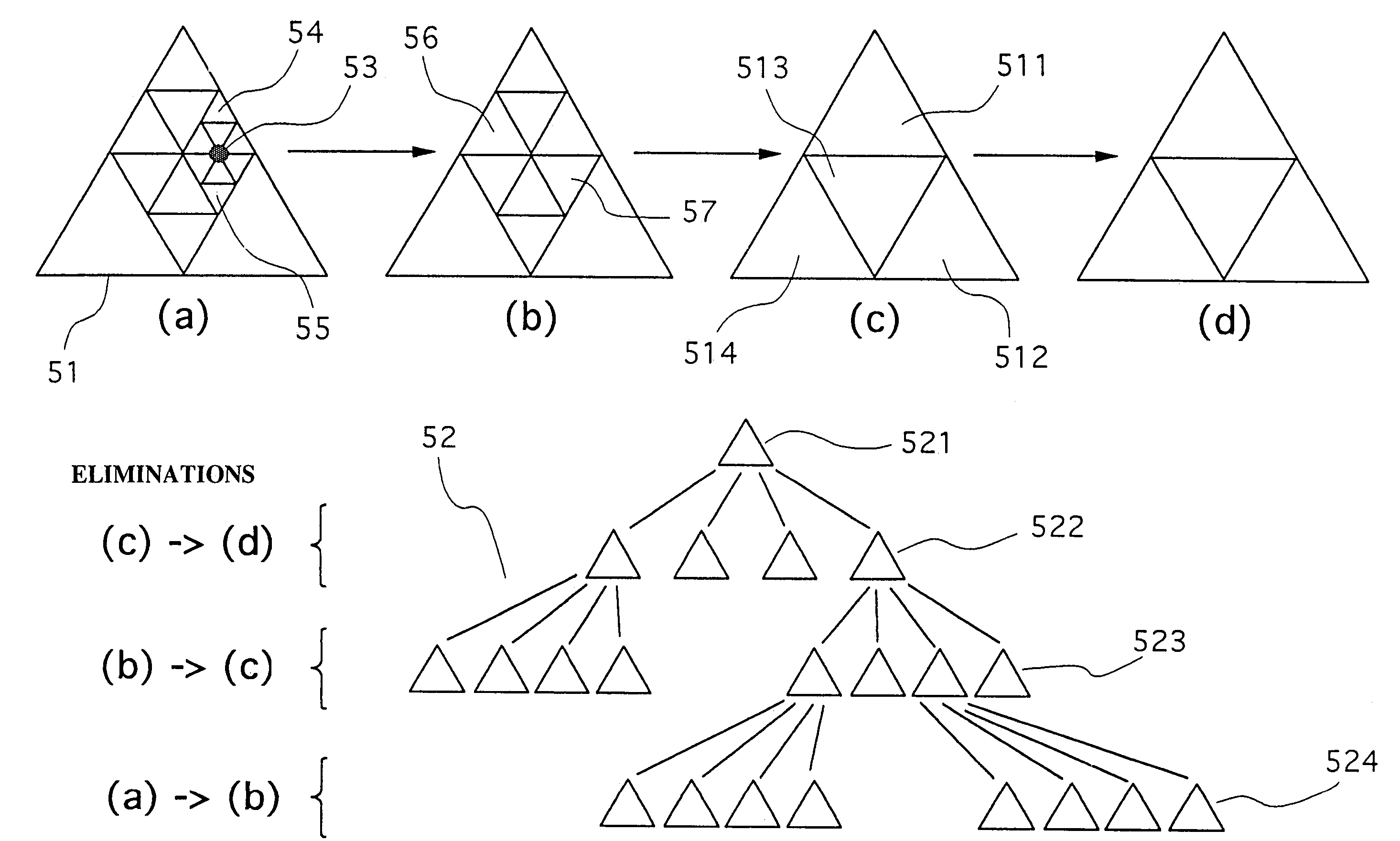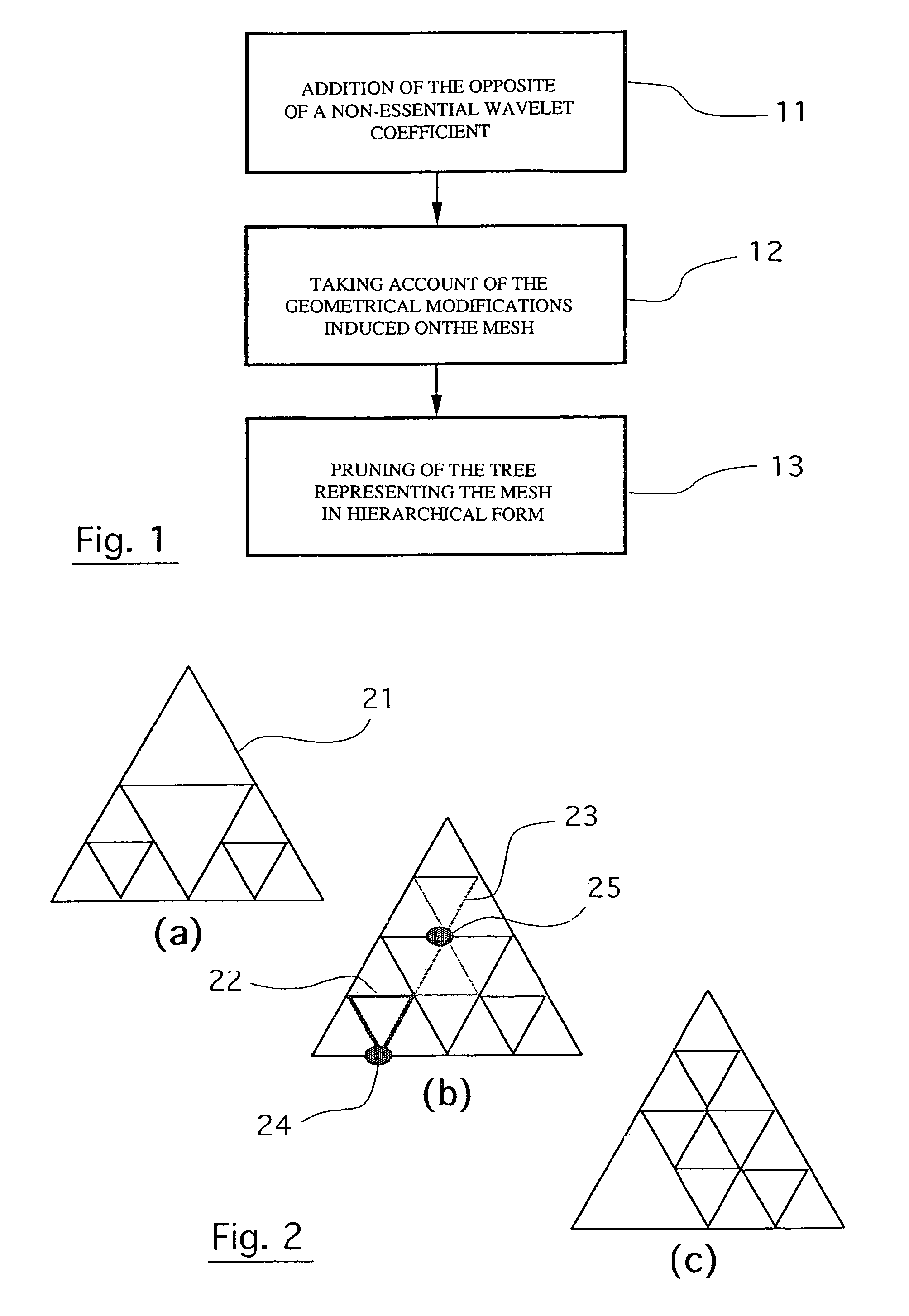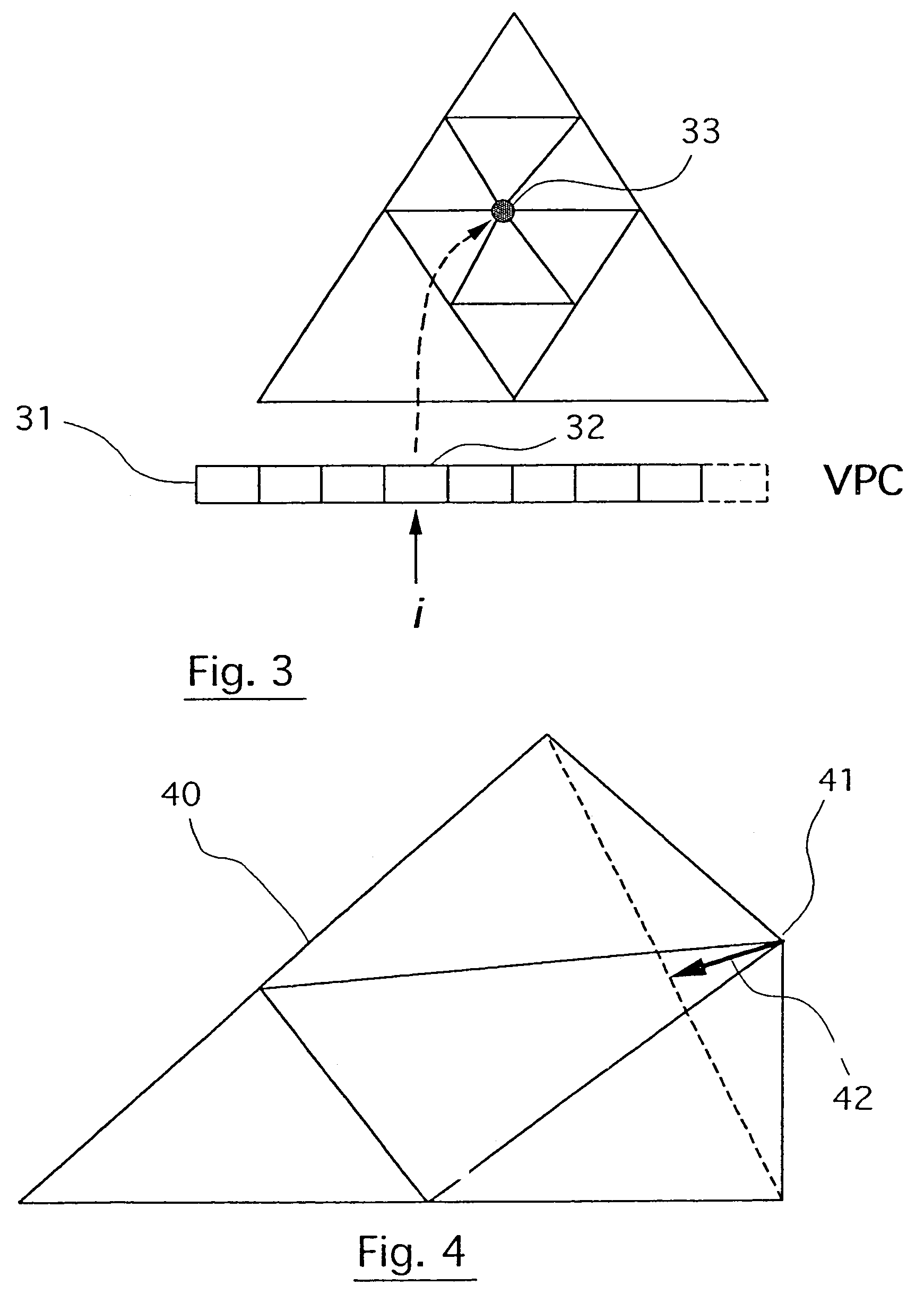Wavelet-based mesh coding method
a wavelet-based mesh and coding technology, applied in the field of representation and adaptive coding of three-dimensional (3d) scenes, can solve the problems of reducing the coding efficiency of the coding method, limiting the influence of the wavelet coefficient to a neighborhood, and not enabling the adaptive display of three-dimensional scenes or objects
- Summary
- Abstract
- Description
- Claims
- Application Information
AI Technical Summary
Benefits of technology
Problems solved by technology
Method used
Image
Examples
Embodiment Construction
[0097]The general principle of the invention is based on the elimination of wavelet coefficients associated with parts of a 3D scene or object that are not visually relevant, so as to enable an adaptive display of said object or said scene.
[0098]Referring to FIG. 1, we present an embodiment of an elimination of this kind of a wavelet coefficient associated with a non-visible part of the mesh representing the 3D object or scene.
[0099]It will be recalled first of all that the invention implements several structures of data and algorithms enabling the elimination of wavelet coefficients that are not visually relevant, without its being necessary to rebuild the entire associated mesh.
[0100]These data structures, which come into play in the progressive depiction of the mesh to be displayed, are the following:[0101]a first data structure associated with a face of the mesh;[0102]a second data structure associated with a vertex of the mesh;[0103]a third data structure associated with the me...
PUM
 Login to View More
Login to View More Abstract
Description
Claims
Application Information
 Login to View More
Login to View More - R&D
- Intellectual Property
- Life Sciences
- Materials
- Tech Scout
- Unparalleled Data Quality
- Higher Quality Content
- 60% Fewer Hallucinations
Browse by: Latest US Patents, China's latest patents, Technical Efficacy Thesaurus, Application Domain, Technology Topic, Popular Technical Reports.
© 2025 PatSnap. All rights reserved.Legal|Privacy policy|Modern Slavery Act Transparency Statement|Sitemap|About US| Contact US: help@patsnap.com



